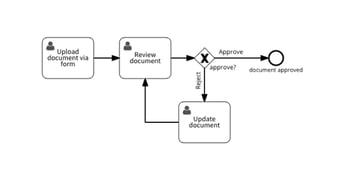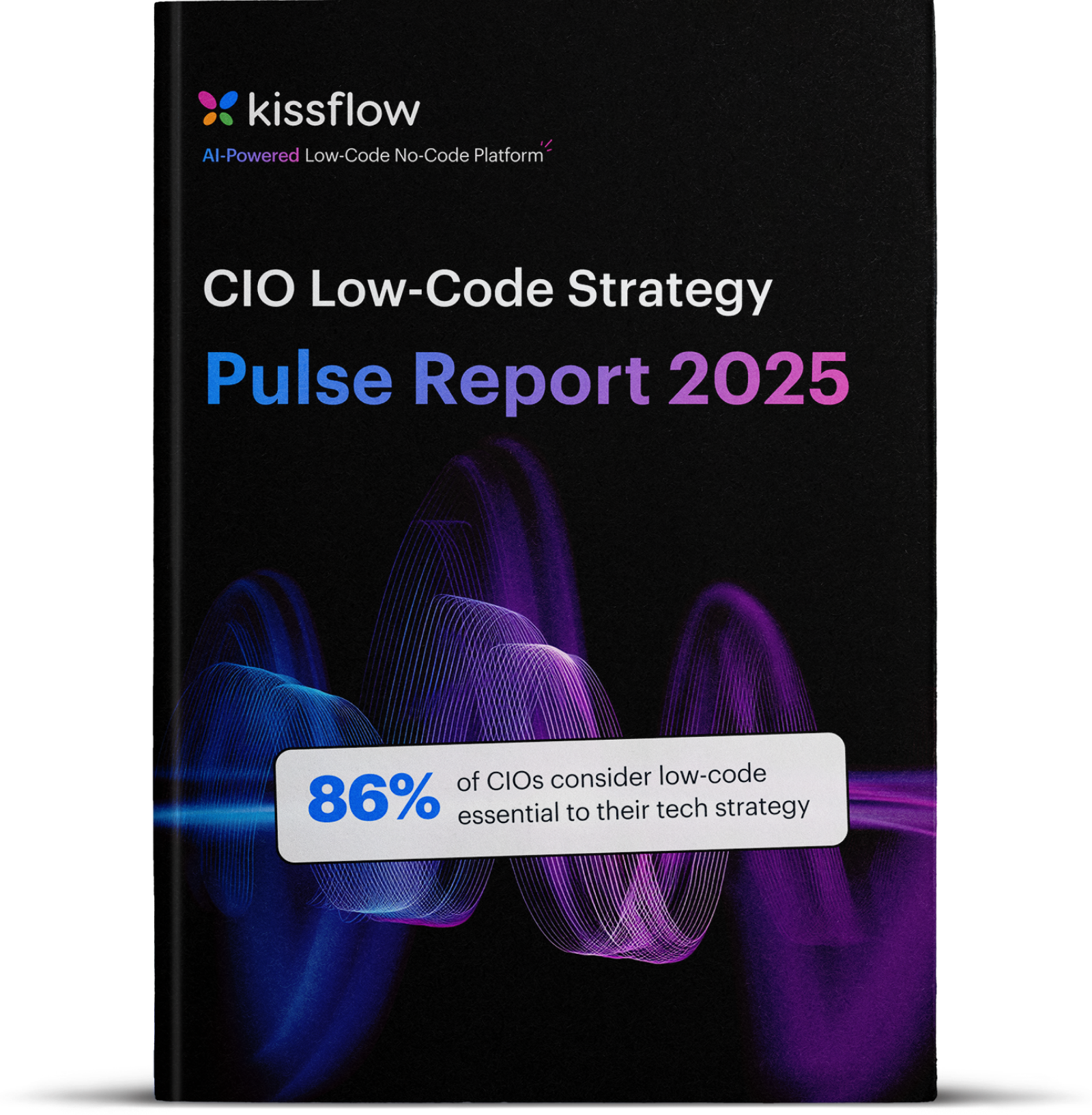
- >
- BPM Software >
- Agile BPM: A Complete Guide to Agile BPM Methodology and its Benefits
Agile BPM: A Complete Guide to Agile BPM Methodology and its Benefits
Agile BPM is not just a methodology; it's a mindset. It's about breaking away from the rigidity of traditional BPM and embracing flexibility. The Agile approach allows your teams to respond instantly to unforeseen circumstances and update processes in real-time, ensuring that your business remains nimble and adaptable.
One of the critical aspects of Agile BPM is data management. The ability to make quick changes in alignment with evolving business requirements or regulatory landscape is key. Agile BPM ensures that your processes are not only well-prepared but also flexible enough to adapt when circumstances shift.
Speed, collaboration, and accurate data form the triumvirate that ensures success with Agile BPM. However, integrating Agile development and data-driven insights can pose challenges, including cultural resistance and data management issues. Overcoming these hurdles requires a disciplined approach to data management and a modern, flexible approach to data governance that emphasizes collaboration, adaptability, and iterative improvements. Moreover, defined and standardized data collection points in the BPM cycle provide an opportunity to optimize process improvements from the insight gained.
As a CIO or a business transformation professional, understanding and implementing Agile BPM is no longer optional—it's a necessity. It's about ensuring that your organization is equipped to navigate the complexities of the modern business landscape with speed, efficiency, and agility.
What is Agile BPM?
Traditionally, business process management is a way of automating and managing structured processes that can be repeated over a long period of time.
However, processes aren’t always designed to react in real time. They’re created to follow the pattern given to them earlier, but aren’t often reactive to instant feedback.
Agile BPM provides automated structures for business processes that also allow the process to act to new data inputs in real time. This is particularly useful when you cannot foresee future circumstances in the process.
In short, the difference between regular BPM and agile BPM is that agile business process management can not only respond to data inputs in real time, but also move away from the box of predictable and clearly defined processes that traditional processes are limited to.
How Does Agile BPM Work?
Agile BPM thrives on the fact that traditional BPM is rigid and unwavering in nature. For Agile process management to work, there has to be an ability with the system and its participants to deal with unstructured or ad-hoc work requests.
But at the same time, the unstructured work and participants must be able to respond without changing the overall design of the process.
To drive this, there are two cause-and-effect models that Agile business process management works on.
Case 1
Cause: Routine-based work is continuously replaced by work that requires knowledge more than a tried-and-tested routine.
Effect: Traditional BPM systems respond to this by becoming faster to adopt to changes and inputs in data. This also allows processes to be modified on the fly to meet current requirements.
Case 2
Cause: Collaboration is being recognized as more of a necessity to get input on how processes need to change.
Effect: Traditional BPM systems allow more and more collaboration features that let multiple users to collaborate simultaneously on a project.
⋙ Thinking of BPM, but unsure which way to use it? We’ve written about choosing the right BPM methodology here.
Where Can I Apply Agile BPM With the Best Effect?
Surprisingly, agile process management isn’t the exception anymore. It’s becoming adopted more as the norm among businesses. This holds especially true for enterprises where there can be dozens, if not hundreds of processes.
But, agile process management can be applied to business processes that meet the following criteria.
- Unpredictability is a common factor
- Processes that aren’t quick enough to adapt to your business needs
- Highly qualified staff working on repetitive tasks they shouldn’t be doing
How Does Agile BPM Benefit Me?
If you’re using a rigid and inflexible process model, you’ll find that agile BPM will ensure that your business is a lot more open to unpredictable changes and instant inputs to data. As a business owner and participant in the office, here are some of the benefits that you stand to gain.
- More focused team members doing important work
- A more flexible and competent attitude towards unexpected circumstances
- A more collaborative environment with data easily moving between people
How Damamax crushed chaos with agile BPM
Damamax, a telecommunications provider established in 2008, faced challenges with its IT infrastructure. Their system struggled to support complex workflows, and the team was overwhelmed with requests for workflow enhancements. The existing tools were complicated, and the system lagged significantly.
Damamax discovered Kissflow, a cloud-based Business Process Management (BPM) platform, in their quest for a solution. It was an immediate fit, offering easy-to-use features that boosted productivity and provided control over their processes. The COO found value in the productivity enhancement and the insightful reports generated by the platform.
Kissflow's customizable forms and centralized data repository provided Damamax with a clear view of its operations, enabling it to identify areas for improvement. This led to significant benefits, including saving the IT team from burnout, eliminating manual processes, and saving time, effort, and money.
Damamax has since expanded its workflow automation to include purchase requests, sales leads, and HR functions like leave requests, with many functions now being 100% automated. They continue to seek ways to improve productivity across their organization using Kissflow.
Enhance your business with Kissflow
Leveraging BPM can provide a strategic advantage by seamlessly aligning business processes with overarching organizational goals. It equips you to swiftly respond to consumer needs and adapt to market fluctuations through process automation, iterative enhancements, and agile solutions.
Infusing this strategy with low-code development platforms brings an added layer of flexibility and governance. Platforms such as Kissflow serve as catalysts for this transformation, offering a visually intuitive drag-and-drop editor that metamorphoses complex processes into streamlined workflows. The beauty of such a platform lies in its simplicity, requiring minimal coding expertise and significantly reducing IT costs.
Frequently asked questions
1. Why is agile BPM important for fast-changing enterprises?
Processes evolve with policies, markets, and org structure.
Agile BPM allows workflows to be updated rapidly without long redesign cycles.
2. How does agile BPM reduce transformation risk?
It enables incremental rollout with feedback loops instead of big-bang change.
Teams adapt gradually, improving adoption and accuracy.
3. What agile practices work best in BPM programs?
Iterative process modeling, quick pilots, continuous KPI reviews, and stepwise scaling.
These practices keep BPM aligned to real operations.
4. How does low-code enable agile BPM delivery?
Low-code reduces build time and supports rapid iteration by fusion teams.
IT still governs standards while business accelerates improvement.
5. Why do agile BPM programs outperform waterfall BPM?
They respond faster to unexpected exceptions and operational shifts.
Waterfall models often go stale before launch.
6. How should CIOs measure agile BPM success?
Look for faster improvement cycles, stable adoption, and shrinking exception volumes.
These show agility plus governance working together.
Check out why this Best BPM Tool is at the top of the competition!











